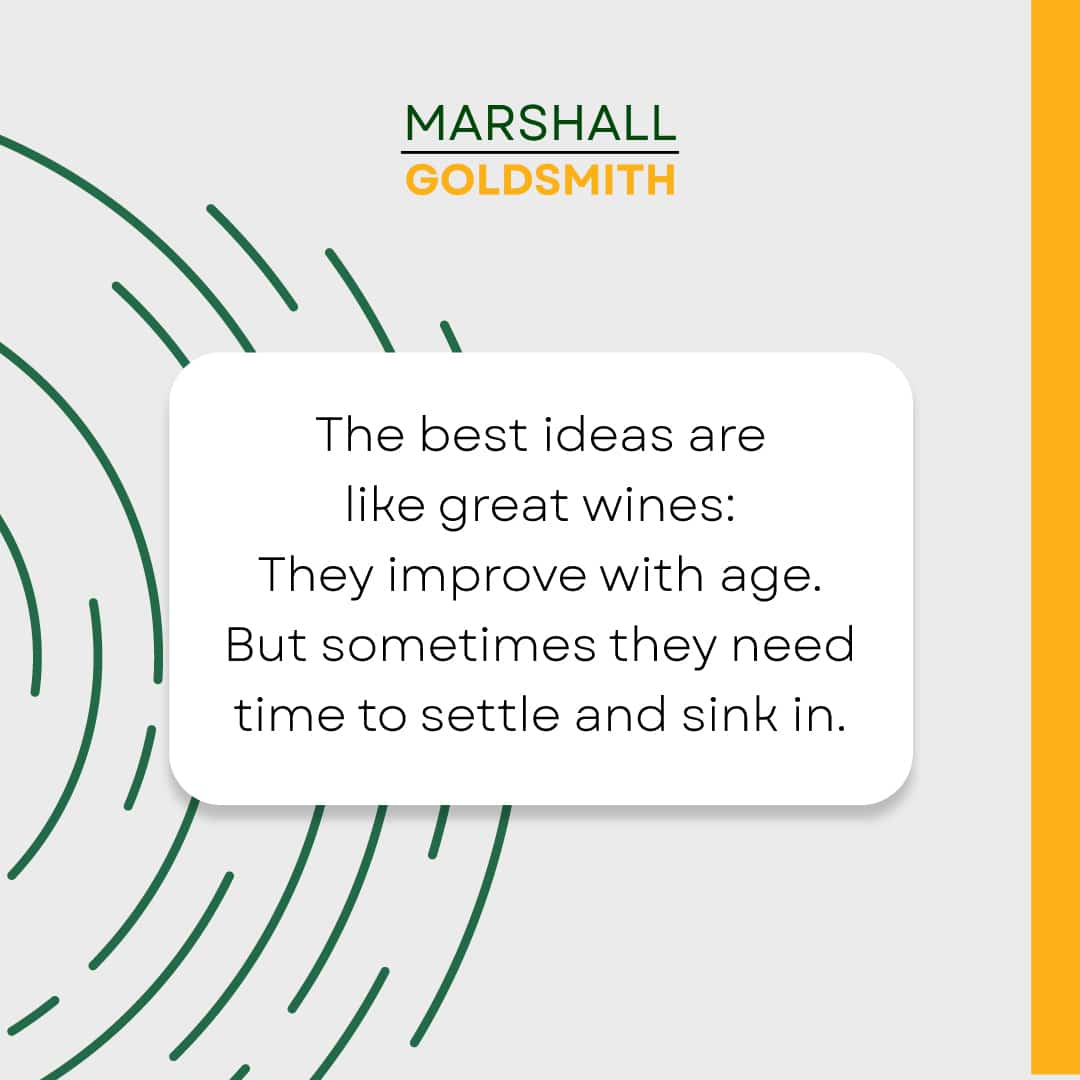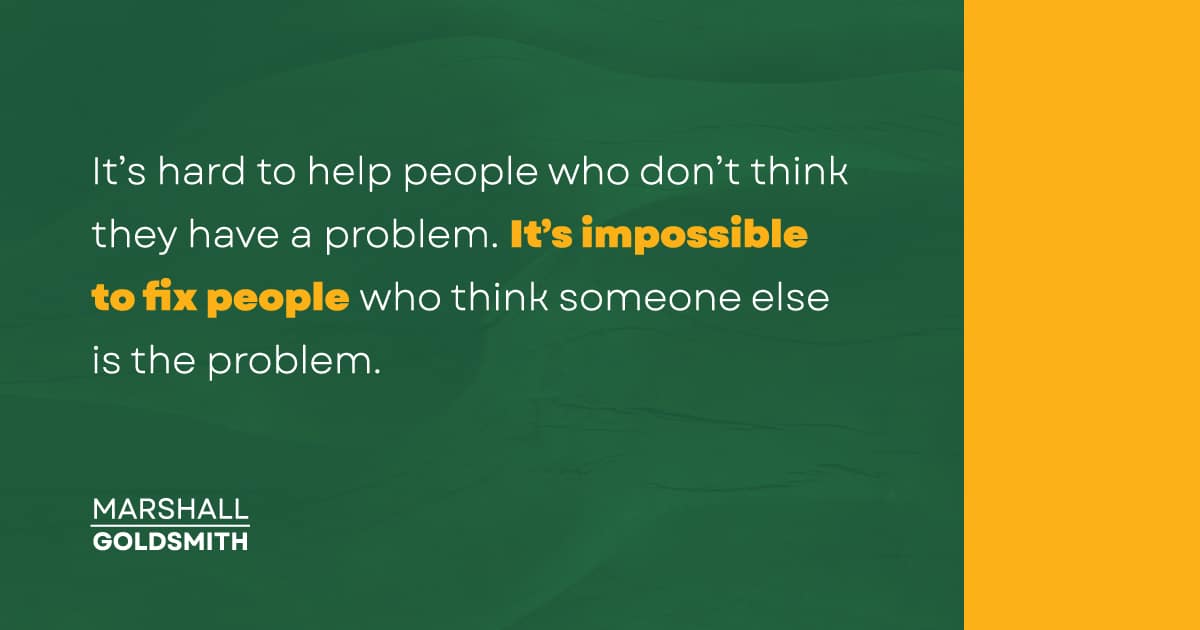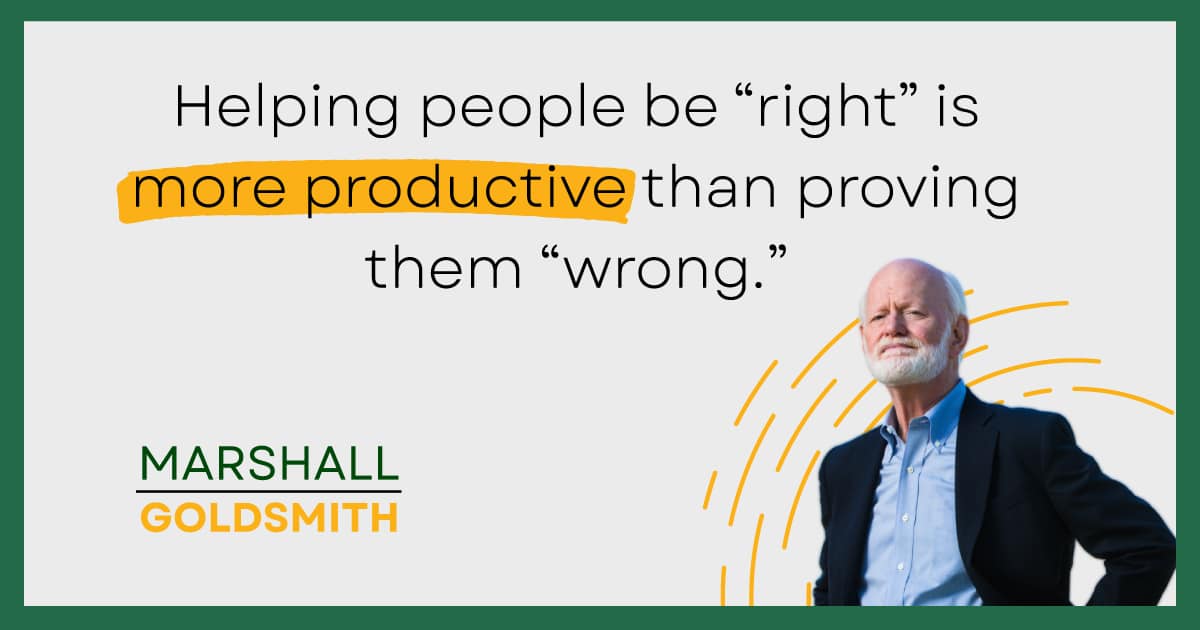Playing Favorites By Marshall Goldsmith There’s a reason I devote...
Teams are becoming more important. As the hierarchical school of leadership fades, a new focus on networked team leadership emerges. Leaders are now members of virtual teams, autonomous teams, cross-functional teams, and action-learning teams.
Many of today’s leaders face a dilemma: as the need to build effective teams increases, available time and other resources to build these teams decreases. Most leaders have more work to do and fewer staff members to help them.
Focused feedback and follow-up increases leadership and customer service effectiveness. A parallel approach to team building helps leaders build teamwork without wasting time. While the approach is simple, it is not easy. Team members must have the courage to ask regularly for feedback and the discipline to develop a behavioral change strategy, to follow-up, and to stick with it.
To implement this team-building process, the leader must assume the role of coach or facilitator, and fight the urge to be the boss of the project.
Greater teamwork occurs when team members develop their own behavioral change strategy, as opposed to having one imposed on them. This process should not be implemented if the leader intends to fire or remove a team member.

Steps in the Process We see 10 steps in the process:
1. Ask each member of the team to record confidentially their individual answers to two questions: how well are we doing in terms of working together as a team? and how well do we need to be doing in terms of working together as a team? Before starting a team-building process, determine if the team feels that team building is both important and needed. Some groups report to the same manager, but have little reason to work interactively as a team. Other groups may believe that teamwork is important, but feel that the team is already functioning smoothly and that a team-building activity would be a waste of time.
2. Have a team member calculate the results. Discuss the results with team members. If they believe that the gap between current effectiveness and needed effectiveness indicates the need for team building,
proceed to the next step. In most cases, team members do believe that improved teamwork is both important and needed. Our interviews with members from several hundred teams in multi-national corporations show that the average team member believes that his or her team is currently at a 5.8 level of effectiveness but needs to be at an 8.7.
3. Ask the team: “If every team member could change two key behaviors, which behaviors would help us close the gap between where we are and where we want to be, and which two behaviors should we all try to change?” Ask team members to record their selected behaviors on flip charts.
4. Help team members prioritize all the behaviors on the charts. Many behaviors will be the same or similar. Determine the two most important behaviors to change for all team members.
5. Ask each team member to have a one-on-one dialogue with each other team member. During the dialogue, each member will request that their colleague suggest two areas for personal behavioral change (other than the two already agreed upon for every team member) that will help the team close the gap between where we are and where we want to be. These dialogues occur simultaneously and take about five minutes each. For example, if there are seven team members, each team member will participate in six brief one-on-one dialogues.
6. Let each team member review his or her list of suggested behavioral changes and choose the two that seem to be the most important. Have each team member then announce their two key behaviors for personal change to the team.
7. Encourage each team member to ask for a brief (five-minute), monthly progress report. Each team member reports on their effectiveness in demonstrating the two key behaviors common to all team members and the two key personal behaviors. Specific suggestions for improvement can be solicited in areas where behavior does not match desired expectations.
8. Conduct a mini-survey follow-up process in four months. In the mini-survey, each team member receives confidential feedback from all other team members on his or her perceived change in effectiveness. This survey will include two common items, the two personal items, and an item that assesses how well the individual has followed up with the other team members.
9. Have an outside supplier calculate the results for each individual (on all items) and calculate the summary results for all team members (on common team items). Each team member can then receive a confidential summary report indicating the degree to which colleagues see his or her effectiveness in the desired behaviors and a summary report on the team’s progress on the items selected for all team members. When team members regularly follow up with their colleagues, they increase their effectiveness in their individual areas for improvement and their effectiveness on the common team items. The mini-survey summary report gives team members positive reinforcement for improvement and validates the importance of ‘sticking with it’ and ‘following-up’.

10. In a team meeting have each team member discuss key lessons from their mini-survey results and ask for further suggestions in a brief one-on-one dialogue with each other team member.
11. Review the summary results with the team. Facilitate a discussion on how the team is doing in terms of increasing its effectiveness in the two key behaviors selected for all team members. Provide the team with positive recognition for increased effectiveness in teamwork. Encourage team members to keep focused on increasing their effectiveness in demonstrating the behaviors that they are trying to improve.
12. Have each team member conduct their brief monthly progress report sessions with each other team member. Re-administer the mini-survey (in four-month intervals) after eight months from the beginning of the process and again after one year.
13. Conduct a summary session with the team one-year after the process has started. Review the results of the final mini-survey and ask the team members to rate the team’s effectiveness on where we are vs. where we need to be in terms of working together as a team. Compare these ratings with the original ratings that were calculated one year earlier. If team members follow the process in a disciplined fashion, the team will see a dramatic improvement in teamwork. Recognize the team improvement in teamwork, and have each team member (in a brief one-on-one dialogue) recognize each of his her colleagues for improvements in behavior that have occurred over the past year.
14. Ask the team if they believe that more work on team building will be needed in the upcoming year. If the team believes that more work would be beneficial, continue the process. If the team believes that more work is not needed, declare victory and work on something else! This process works because it is highly focused, includes disciplined feedback and follow-up, does not waste time, encourages participants to focus on self-improvement, and provides frequent feedback and reinforcement.
We challenge you as a team leader to try it! The down-side is low. The process takes little time, and the first minisurvey will show quickly if progress is being made. The ‘up-side’ can be very high. As effective teamwork becomes more important, the modest time investment you make in this process may produce an exponential return for your team and organization. LE
ACTION: Engage in team building.

Adding Too Much Value Won’t Get You There By Marshall...
C-Suite Master Class: No, But, However By Marshall Goldsmith Continuing...
The Doerr Institute: Expanding the Market for Coaches By Marshall...
Making Leadership Development Part of the College Degree at Rice...
Sanyin Siang – Winner of the Thinkers50 Marshall Goldsmith Coaching...
Thinkers50 Marshall Goldsmith Distinguished Achievement Award in Coaching – Nominees...
Leading with Influence: What Is Influence360°? By Marshall Goldsmith Founder...
Are You a Dominator, Manipulator, Persuader or Influencer? By Marshall...
Leading with Influence: Redefining Modern Influence Part 2 By Marshall...
My mission is simple. I want to help successful people achieve positive, lasting change and behavior; for themselves, their people, and their teams. I want to help you make your life a little better. With four decades of experience helping top CEOs and executives overcome limiting beliefs and behaviors to achieve greater success, I don’t do this for fame and accolades. I do this because I love helping people!
As an executive educator and coach, I help people understand how our beliefs and the environments we operate in can trigger negative behaviors. Through simple and practical advice, I help people achieve and sustain positive behavioral change.